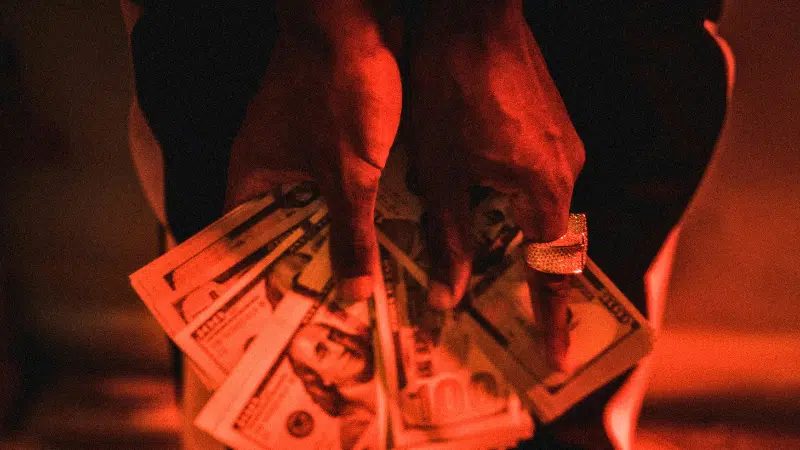Whether you’re new to the industry, trying to put your music out for the first time, or have been in the game for a while and looking for a new distributor, you’ve probably seen a glimpse of all the different pricing options out there. It can get confusing fast. Some distributors charge flat fees, others take a percentage of your earnings, and the fine print isn’t always clear about what you’re really paying for.
Distribution is one of those behind-the-scenes parts of releasing music that can seriously impact how much money you keep from your streams. In this article, we’re breaking down the two main pricing models (flat-fee and revenue-share) so you know exactly what you’re signing up for (and how to choose what’s best for you). 💰 Here’s everything you need to know.
Flat Fees vs. Revenue Share: What Every Artist Should Know
Before We Dive In…
At its core, distribution is what gets your music onto platforms like Spotify, Apple Music, Amazon Music, and the like. Distributors are the ones who handle the delivery process and make sure you get paid for the streams and downloads that come in. But these days, distribution can include a lot more than just uploading your music; many distributors also offer marketing tools, playlist pitching, analytics, publishing administration, and even sync opportunities.
It’s also important to understand the difference between aggregators and distributors. Aggregators usually follow the flat-fee model (you pay a set amount to get your music on platforms, and that’s where their role typically ends). Distributors, on the other hand, usually work on a revenue-share model because they’re offering more hands-on support (things like playlist pitching, marketing services, or release strategy guidance), which can help you grow beyond just getting your tracks live.
While most artists get the basic idea, what’s less obvious is how different distributors charge for those services. Some models keep things simple with one flat rate, while others take a percentage of your royalties in exchange for ongoing access. Understanding those pricing differences is key to making sure you’re not leaving money on the table later on.
The Flat-Fee Model
With the flat-fee model, you pay a set amount upfront (either per release or annually) and you keep 100% of your royalties. This approach is more common among aggregators and tends to be a better fit for newer or fully independent artists who want to keep things simple and control their own rollout.
This setup works a lot like paying rent: once you’ve covered that cost, everything you make afterward is yours to keep for other things. For artists who release regularly or have a growing catalog, that can add up to more money in your pocket over time. Especially if you’re independent and paying for everything on your own, this can be a huge plus.
However, that upfront cost can be a barrier for some. If you’re still building your audience or only releasing a few tracks a year, it might take longer to see a return. Some distributors also charge separate fees for each release, so if you’re dropping singles frequently, the total can add up quickly.
⚡️ The key takeaway here? Flat fees give you full control and long-term value, especially if you release often, but the upfront cost can be a hurdle if you’re just starting out.
The Revenue-Share Model
The revenue-share model is more common for artists who are already generating consistent income from their releases. Instead of paying upfront, the distributor takes a percentage of your royalties (typically between 10% and 30%), but in exchange, they’re usually offering additional services like playlist pitching, marketing support, and release strategy.
This setup is great for artists with more traction because it ties in the distributor’s success with yours, which means they’re incentivized to help your music perform well. You’re not just paying for access to platforms; you’re gaining a partner invested in your growth.
So, what’s the trade-off here? You’re sharing a slice of your earnings, but that partnership can actually help you earn more in the long run if the distributor’s team is actively supporting your career.
——
📚 Feed yo’ brain…
Symphonic for New Artists: The Ultimate Guide to Getting Started
How to Use Crowdfunding to Launch Your Next Project
What No One Tells You About Switching Distributors
SEO for Musicians: Why It Matters and How To Use It
——
How To Choose The Right One For You
Choosing between flat-fee and revenue-share models comes down to your release strategy, budget, and long-term goals. Generally speaking, flat-fee models are ideal for newer artists testing the waters, while revenue-share deals tend to be better suited for artists with steady traction who can benefit from a distributor’s added marketing muscle. To help you decide, think about these things first:
- Your release frequency: If you release music often, flat fees usually pay off in the long run. For occasional releases, revenue share might make more sense initially.
- Your budget and earnings: New artists or those with limited funds can benefit from a revenue share to avoid those upfront costs. Artists with a steady income can take advantage of those flat fees to keep 100% of their royalties.
- Your growth goals: Think beyond money for a sec… some distributors offer extras like marketing tools, playlist pitching, analytics, or publishing services. A model that includes these perks can be more valuable than just the upfront price.
💡 Keep in mind, some distributors also offer hybrid models, which combine the small upfront fee with a small percentage of royalties, giving you a mix of the predictability of the flat fee option and the accessibility of the revenue share option.
In reality, there’s no one-size-fits-all answer to what’s “best,” per se. It all depends on what you can afford, where you are in your career, and what you need to see the most growth.
Some Fine Print to Watch Out For
Before you commit to a distributor, it’s important to check out the fine print. Some charge annual renewal fees to keep your music live, while others may have small costs for removing or replacing a release. Additional services like publishing administration, splits management, playlist pitching, or marketing tools can sometimes come with extra charges, and pricing structures can vary, too (some charge per release, others per artist per year), so if you’re planning multiple releases, this can affect your budget.
For example, Symphonic’s Starter plan keeps things simple: for $19.99 per year, you get unlimited releases with no per-release fees, plus free royalty splitting through the SplitShare™ feature to manage collaborator payments without extra costs. Plans like this show how some distributors bundle services upfront, so you can see exactly what you’re paying for and avoid surprise charges.
To stay on top of any potential fees, always check the distributor’s FAQ or pricing page, and review their terms of service to understand what’s included vs. what might cost extra. Knowing all this upfront is what’s going to help you plan your releases and budget more effectively.
To wrap things up…
I know, first instinct tells us to try to spend the least amount possible… BUT great distribution is an investment you will thank yourself for later. The right pricing model can affect how much money you actually keep, how smoothly your releases go, and even what tools and support you have access to as you grow.
Rather than stressing over finding a perfect option, focus on what makes sense for your current situation. Are you releasing a lot of music this year? Are you just starting out and testing the waters? Think about what will give you the most flexibility, the clearest control over your earnings, and the support you need to reach your goals.
You got this!



